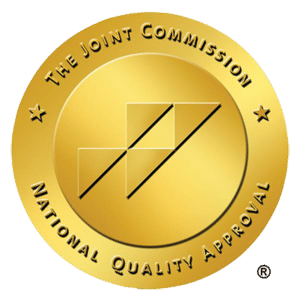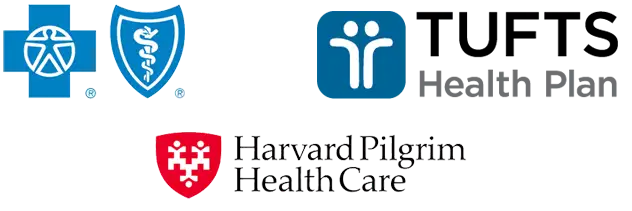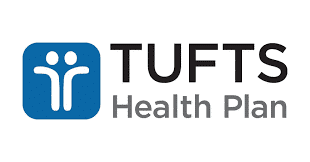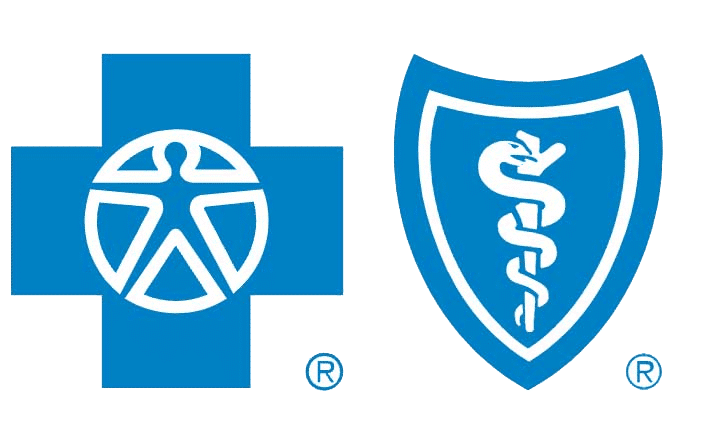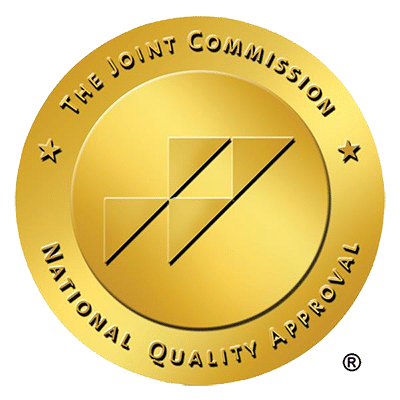Wondering what are the warning signs of meth addiction? Early detection can be lifesaving. From drastic behavioral swings to ‘meth mouth,’ these symptoms are alarming yet crucial to recognize. Our guide cuts through the complexity, offering straightforward, actionable information on identifying meth abuse and accessing help. Read on to understand these indicators and learn about the vital steps towards recovery.
Key Takeaways
- Methamphetamine addiction leads to neuropsychiatric deficits impacting memory, emotion, decision-making, and behaviors, with changes in brain function driven by dopamine system alterations.
- Physical signs of meth abuse include ‘meth mouth’, significant weight loss, and skin sores, while prolonged use heightens risk of cardiovascular events, bloodborne diseases, and overdose.
- Treatment must be comprehensive and tailored, addressing not just addiction but co-occurring mental health disorders, with programs like medically managed detox, Partial Hospitalization, and Outpatient Programs at facilities like Topsail.
Understanding Methamphetamine and Its Addictive Nature
Methamphetamine is a potent, highly addictive illegal stimulant that comes in various forms, including powders, shiny glass fragments, or whitish crystalline rocks known as crystal meth. The drug’s high potential for addiction, often referred to as meth addiction methamphetamine, stems from the serious risks and changes in brain function associated with its use.
Multiple factors contribute to meth addiction, including genetic predispositions, environmental influences, and changes in brain function. A family history of drug abuse, specific gene variations, and stress can all play a role in susceptibility to meth abuse. Even traumatic experiences, such as being a victim of abuse, can predispose an individual to substance abuse.
The Science Behind Meth Use
Methamphetamine’s insidious hold on the brain stems from its ability to cross the blood-brain barrier and affect dopamine levels in the central nervous system. Dopamine is a neurotransmitter that plays a crucial role in how we feel pleasure. Methamphetamine increases the activity of dopamine, leading to an intense high that users chase again and again.
However, the repeated surge of dopamine does not come without a price. Long-term meth use can damage dopamine and serotonin nerve terminals, leading to neuropsychiatric deficits and impairments in areas governing:
- decision-making
- behavior suppression
- emotion
- memory
This damage underlines the devastating effects of meth on the brain and the urgent need for treatment.
The Path to Addiction
The transition from casual meth use to addiction often involves a vicious cycle of tolerance and withdrawal. As tolerance develops, meth users need larger or more potent doses to achieve the same high, leading to an escalating pattern of abuse. This dangerous cycle underscores the importance of early treatment for meth addiction, as it can significantly improve outcomes for individuals.
The clinical term for methamphetamine addiction is stimulant use disorder or substance use disorder. This term encompasses a range of severity levels, with the most severe cases involving chronic, high-dose meth use. Treatment for stimulant use disorder often involves a combination of medication and behavioral therapies, tailored to the individual’s specific needs.
Identifying Meth Addiction: Behavioral Symptoms
Meth addiction is not just a physical affliction; it also causes significant behavioral changes. Long-term meth use can lead to meth addiction symptoms such as:
- anxiety
- mood disturbances
- violent behavior
- increased aggressiveness
- severe mood swings
These changes can serve as key indicators of meth addiction signs, suggesting that a person is struggling with meth addiction.
Meth addiction often involves a pattern of repeated drug use to maintain a prolonged high, a behavior known as binging. As tolerance develops, larger or more potent doses are needed for the same effect, indicating escalating drug intake. This cycle of intense highs and devastating lows can trap users in a cycle of addiction, making it difficult for them to quit without professional help.
Changes in Social Interactions
As meth takes hold, users often begin to isolate themselves from friends and family. They may withdraw from social activities, choosing instead to focus on obtaining and using meth. This self-imposed isolation can lead to strained or broken relationships, adding to the user’s sense of loneliness and despair.
These changes in social interactions can serve as warning signs of meth addiction. If a loved one starts to isolate themselves or withdraw from previously enjoyed activities, it may be time to intervene. Remember, early intervention can significantly improve the chances of successful recovery.
Risky Behaviors and Legal Problems
Methamphetamine use is also associated with increased risky behaviors. The intense effects of the drug can lead to poor decision-making, resulting in actions that can attract law enforcement attention. These risky behaviors can range from reckless driving to theft or violence, often leading to legal problems.
Recurrent encounters with law enforcement can be indicative of underlying meth addiction issues. If a loved one is repeatedly getting into trouble with the law, it may be a sign that they’re struggling with meth addiction. In such cases, seeking professional help can be a crucial step towards recovery.
Want to Learn More about Meth Addiction?
Our addiction recovery team is here 24/7 to answer your questions or to get you help.
Physical Symptoms of Meth Abuse
Methamphetamine not only wreaks havoc on an individual’s mental and emotional health but also has severe physical consequences. One of the most visible signs of meth addiction is severe dental issues, often referred to as ‘meth mouth.’ This condition involves:
- tooth decay
- tooth loss
- gum disease
- cracked or broken teeth
- dry mouth
- bad breath
These dental issues are often exacerbated by nutritional deficiencies and poor dental hygiene associated with meth use.
Other physical symptoms of meth addiction include significant weight loss and skin sores. These health effects can be devastating, impacting the individual’s overall well-being and quality of life. Recognizing these physical signs is crucial in identifying meth addiction and seeking timely treatment.
Health Consequences of Prolonged Meth Use
The consequences of prolonged meth use go beyond the visible physical symptoms. Chronic methamphetamine misuse is linked with cardiovascular events such as stroke and heart attack, as well as additional organ damage. This underscores the urgent need for meth users to seek help and begin the journey towards recovery.
Individuals who inject methamphetamine are also at an increased risk of contracting bloodborne diseases, specifically HIV and hepatitis B and C. Furthermore, a meth overdose can lead to potentially fatal symptoms, including rapid heart rate, high blood pressure, and chest pain leading to serious cardiac issues. The grave health consequences of persistent methamphetamine abuse illustrate the critical need for immediate intervention and comprehensive treatment.
Psychological Impact and Co-Occurring Disorders
The psychological impact of meth addiction can be as devastating as the physical effects. Chronic methamphetamine abuse can lead to heightened anxiety, depression, and a significant risk of developing psychosis. These psychological issues often manifest as hallucinations, delusions, and conditions resembling schizophrenia, further compounding the individual’s distress.
In addition to these psychological issues, individuals who chronically use methamphetamine may also suffer from memory deficits and impaired executive functioning. These cognitive impairments can significantly impact the individual’s ability to function in day-to-day life, making it even harder for them to break free from the grip of meth addiction.
Mental Health and Meth Abuse
The relationship between mental illness and meth abuse is a complex one. Meth abuse can exacerbate existing mental health conditions, leading to a worsening of symptoms and making treatment more challenging. Additionally, meth abuse can also contribute to the development of new psychiatric disorders. Neurologists and mental health professionals should be aware of this association, as it can significantly impact the treatment approach and outcomes.
Methamphetamine abuse causes alterations in dopamine system activity, resulting in reduced motor speed and impaired verbal learning. These neurological changes underscore the profound impact of meth on the user’s brain and the need for comprehensive treatment that addresses both the addiction and its associated cognitive impairments.
Addressing Dual Diagnosis
A dual diagnosis refers to the presence of both meth addiction and co-occurring mental health disorders. This scenario is not uncommon among individuals struggling with meth addiction, given the significant psychological impact of the drug. Addressing both conditions simultaneously is crucial as untreated mental health issues can undermine meth addiction recovery efforts and vice versa.
An integrated treatment approach is essential for effectively addressing dual diagnosis. This involves ensuring that both the meth addiction and mental health disorders are treated concurrently, providing the individual with the best possible chance of recovery.
The Stages and Symptoms of Meth Withdrawal
Withdrawal from methamphetamine can be a challenging and uncomfortable process, with symptoms beginning within just a few hours after the last use. The most severe physical symptoms typically peak around the second or third day of cessation, with individuals experiencing a range of unpleasant and potentially dangerous effects within the first 24 hours post-use.
During meth withdrawal, individuals may experience the following symptoms:
- Depression
- Anxiety
- Fatigue
- Intense drug cravings
- Increased appetite
- Agitation
- Insomnia
- Excessive sweating
- Paranoia
- Hallucinations
- Fever
- Confusion
- Nausea
- Severe depression
The severity of these withdrawal symptoms is influenced by factors like the length and frequency of meth use, the amount used, concurrent use of other substances, and the method of consumption.
Medically Managed Detox Options
Given the severity and potential dangers of meth withdrawal, a medically managed detox is often the safest and most effective option. This approach includes:
- Allowing the body to eliminate meth and other toxins in a secure environment
- Constant medical care
- Supportive medications to alleviate withdrawal symptoms
Detoxification is the first stage of meth addiction treatment, involving evaluation, stabilization, and preparation for subsequent treatment phases. While no medications are officially approved for meth withdrawal, supportive medications like bupropion, modafinil, and fluoxetine are used to help alleviate withdrawal symptoms. This underlines the importance of seeking professional help when attempting to break free from meth addiction.

Comprehensive Meth Addiction Treatment at Topsail
At Topsail, we understand the complexities of meth addiction and the importance of personalized, evidence-based treatment. Our team of dedicated professionals assesses each individual’s medical history and current situation to create a personalized treatment plan aimed at long-term recovery. We offer a range of evidence-based methamphetamine addiction treatment programs in MA, including a Full Day Program, a Half Day Program, and an Outpatient Program to accommodate different needs and schedules.
Our services are dedicated to the specific challenges of meth addiction, providing comprehensive support and care for individuals working towards sobriety. In the fight against meth addiction, we also acknowledge the dangers posed by meth labs. Our state-of-the-art facilities, top-notch amenities, and compassionate, personalized care create an environment conducive to recovery, helping individuals regain their lives from the clutches of meth addiction.
Full Day Program (PHP)
Our Partial Hospitalization Program, also known as the Full Day Program, provides intensive, full-day addiction treatment five days a week. This comprehensive approach to meth addiction treatment focuses on:
- Addressing the root causes of addiction
- Providing the necessary tools and support for individuals to overcome their addiction
- Helping individuals reclaim their lives
Half Day Program (IOP)
Our Half Day Program, also known as the Intensive Outpatient Program (IOP), is designed to assist individuals with meth addiction as they reintegrate into their daily lives. Meeting three times a week for 3-4 hours, this program offers flexibility in scheduling by offering evening sessions and the option for telehealth services.
This balance of structure and flexibility helps individuals maintain their recovery while resuming their daily responsibilities.
Outpatient Program (OP)
For individuals needing less structured support in their recovery, we offer the Outpatient Program (OP). This program offers customized addiction rehab treatment plans that fit individuals’ schedules, with sessions running once a week for approximately an hour. This tailored approach allows us to provide the necessary support and care while respecting the individual’s autonomy and daily commitments.
Responding to Overdose: Recognizing and Reacting to Meth Overdose Effects
Recognizing the signs of a methamphetamine overdose is crucial for quick intervention and potentially saving a life. Symptoms of a meth overdose can include rapid heart rate, high blood pressure, and chest pain, which can lead to serious cardiac issues. If you suspect someone is experiencing a meth overdose, it’s critical to call 911 immediately and administer naloxone if it’s available.
An overdose is a clear sign that the individual’s meth use has reached a dangerous level, and it should serve as an urgent call to action. Encouraging the individual to seek help and enter treatment can be a lifesaving intervention. The drug abuse warning network can provide valuable information on such cases. Remember, it’s never too late to reach out for help and start the journey towards recovery.
Preventing Meth Relapse: Aftercare and Continued Support
The journey towards recovery from meth addiction does not end with detox or treatment. The first year after meth addiction treatment sees an average relapse rate of approximately 61%, highlighting the vulnerability of recovering individuals during this period. Relapse can often be driven by various triggers, including certain places, social encounters, or changes in brain chemistry resulting from chronic drug use.
Understanding these relapse triggers and how to manage them is a critical component of sustained recovery. Aftercare programs focus on providing continuous support and strategies designed to address these triggers and help maintain sobriety. Remember, recovery is a lifelong journey, and continued support can make all the difference.
Meth addiction is a complex and devastating issue, impacting not only the individual struggling with addiction but also their loved ones. It’s an issue that requires a comprehensive understanding, from recognizing the signs and symptoms to understanding the physiological and psychological impact, and the importance of seeking treatment. However, amidst the devastating effects of meth addiction, there is hope. With appropriate intervention, comprehensive treatment, and continued support, recovery is possible.
At Topsail, we are dedicated to helping individuals break free from the grip of meth addiction and reclaim their lives. We believe in the power of personalized, evidence-based treatment and the potential for everyone to achieve a life of sobriety. Meth addiction may be a powerful foe, but with understanding, compassion, and the right support, we can rise above it.
Frequently Asked Questions
What is methamphetamine?
Methamphetamine is a highly addictive illegal stimulant that comes in various forms, including powders, shiny glass fragments, or whitish crystalline rocks known as crystal meth. It is a potent and dangerous drug.
What are some signs of meth addiction?
If you notice significant personality changes, increased aggressiveness, severe mood swings, along with physical symptoms like severe dental issues, significant weight loss, and skin sores, it might indicate meth addiction. Take prompt action to address this issue.
What are the health consequences of prolonged meth use?
Prolonged meth use can lead to serious health consequences including cardiovascular events, organ damage, and increased risk of bloodborne diseases like HIV and hepatitis B and C. It is important to seek help if you or someone you know is struggling with meth use.
What treatment options does Topsail offer for meth addiction?
Topsail offers a Full Day Program, Half Day Program, and an Outpatient Program for meth addiction treatment, providing a comprehensive range of evidence-based options to accommodate different needs and schedules.
What is aftercare and why is it important?
Aftercare is essential as it provides ongoing support after treatment, helping to prevent relapse by addressing triggers and maintaining sobriety.
Related Posts

The Stages of Crack Addiction: Understanding the Progression
Are you trying to understand the stages of crack addiction? This article outlines the progression from initial experimentation to the devastating impact of full-blown addiction.

The Signs of Crack Addiction: Key Symptoms to Watch For
Spotting the signs of crack addiction early can be lifesaving. Rapid weight loss, behavioral shifts, and psychological disturbances are warning signals. This guide directly addresses

Managing Crack Addiction Withdrawal: Symptoms & Timelines
What does crack addiction withdrawal really look like and how can you manage it? When confronting withdrawal, it’s crucial to grasp the intensity of symptoms,

How to Treat Marijuana Addiction Effectively: Beat The Habit
Seeking how to treat marijuana addiction? This straightforward guide outlines step-by-step methods to break free from marijuana’s grip. Simplifying the science, we address the core

A Step-by-Step Guide on How to Overcome Crack Addiction
Navigating the turbulent waters of crack addiction recovery may seem daunting, but you’re not alone. In learning how to overcome crack addiction, knowing what to

Essential Guide on How to Help Someone with Meth Addiction
If you’re seeking to understand how to help someone with meth addiction, this article is your immediate support guide. Encountering meth addiction within someone you
